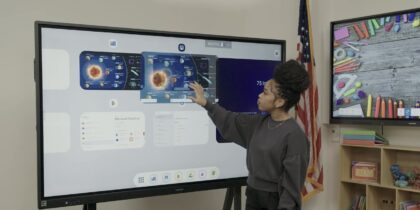It seems that every app you come across these days integrates gamification to some level. And that’s fine for fitness trackers or personal finance tools, but is gamification really the best method for teaching?
It turns out there is some science behind gamification education, and it might provide benefits beyond just getting students interested in the subject matter.
Games Can Increase Engagement
Students are used to playing games, earning badges for successfully completing challenges and sharing their wins with friends. The challenge of winning a level or beating an obstacle can keep them working until they can earn that achievement. Why not put that natural affinity for gaming to use with games that teach?
Because games have become so popular, it’s possible to find high-quality educational games that are based on research and appropriate pedagogy at all levels. Many of them are even free, tied into Google Apps for Education so they can easily integrate into lesson plans and grading tools. However, there are many poorly designed games created simply to cash in on the game-based learning trend. To avoid this, look for games that are created by educators or respected curriculum companies so you can be sure they’ll be well designed and will help you further learning goals.
Gamification Hits the Brain’s Pleasure Centers
Playing games can signal the release of dopamine in students’ brains when they achieve the goal set out for them, whether they’re playing a learning game or something for fun outside of class. Dopamine is a neurotransmitter that controls the reward and pleasure centers of the brain. This can help students enjoy the game and create long-lasting affinity for the subject matter they’re studying. And it can help them find enjoyment in solving complex problems and seeking out problem-solving activities, even outside of games.
Again, though, be sure that the games you choose are well integrated into your curriculum and up to the standards your students need to achieve. Additionally, ensure the challenges the game poses align with your students’ learning levels. If it’s too easy, students won’t learn anything new. But if it’s too hard, they’ll give up before they come to a solution — and before they learn any of the intended new information.
Dopamine Helps Improve Learning
Even more important than creating a pleasurable association with learning, gamification education can actually improve learning. Dopamine is released when a person learns a new skill or interesting piece of information, and it has a role in helping move information into long-term memory. This can be the biggest benefit of integrating fun, educational games and problem-solving experiences into education — improving students’ long-term recall of information learned in a game can translate into better performance on assessments and an improved ability to connect new information to content they learned previously.
Game-Based Learning Isn’t a Panacea
With all of this evidence, it might seem that it’s time to integrate games into the curriculum immediately. But it’s important to do it with intention. For specific students, games might make more sense in courses where they’re struggling, to provide extra incentive to learn a tough subject. Reading games, for example, can help students who don’t enjoy reading build their skills and positive associations. Games can also enhance remedial courses and help students get up to grade level. Finally, games can make an impact in courses students typically enjoy less but that lend themselves to interesting exploration, such as math or science.
The key to successfully integrating gamification in the classroom is to know your students and your teachers, and choose well designed educational games that will have a strong effect on learning.
To get students invested in games, it’s important to ensure your classroom has the cutting-edge technology to keep up. Stay ahead of all the latest educational technology solutions here.







